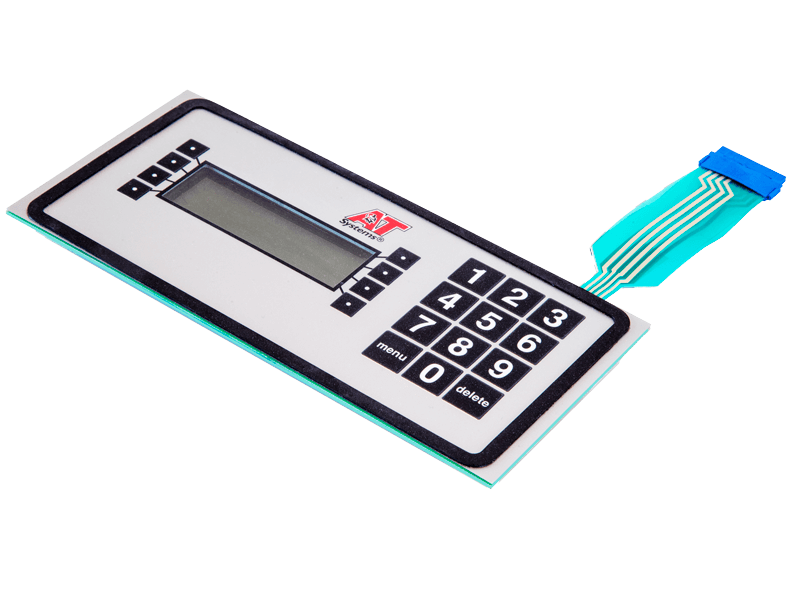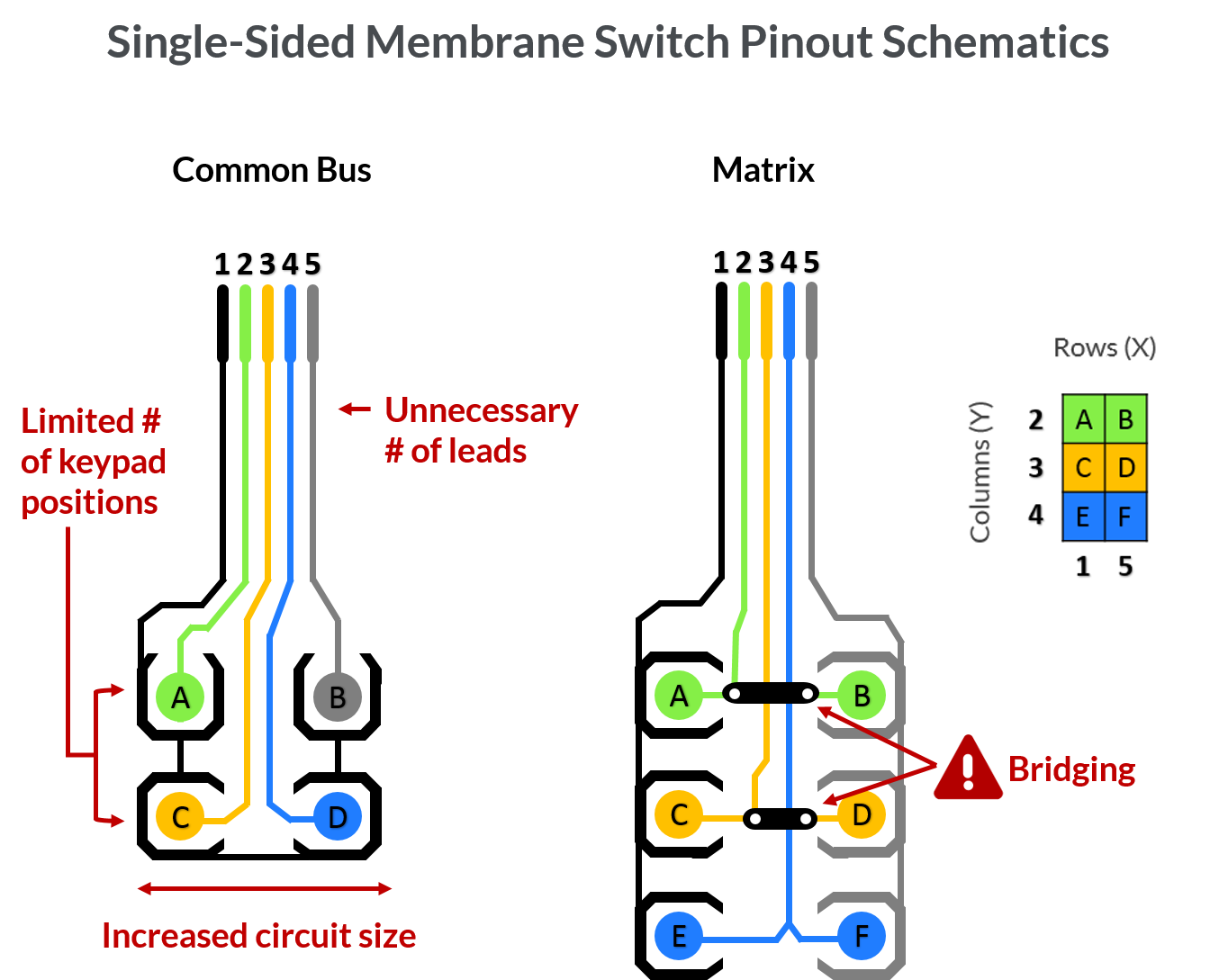The Benefits of Using Membrane Switches in Modern Electronics
Discover Just How Membrane Switches Function and Their Role in Modern Electronics
Membrane Switches stand for an innovative assimilation of modern technology and style within the realm of modern electronic devices, acting as necessary interfaces in numerous tools. Made up of multiple layers, these buttons use pressure-sensitive mechanisms to promote individual interaction. Their applications extend different industries, from customer electronics to clinical equipment, highlighting their convenience and value. Understanding the ins and outs of Membrane button functionality and their more comprehensive implications in boosting individual experience welcomes further expedition into their style, benefits, and the ingenious growths shaping their future in modern technology.
What Are Membrane Switches?

Membrane switches are identified by their durability and resistance to ecological aspects, such as dust, dampness, and severe temperatures. They can be tailored with different graphics, colors, and responsive comments alternatives, improving user experience while keeping aesthetic appeal - membrane switches. The unification of printed circuits permits for seamless combination into gadgets, boosting general functionality.
The convenience of Membrane switches appears in their capability to sustain both easy and intricate control features. They can incorporate functions such as LED indications and touch-sensitive technology, satisfying details user demands. As modern technology continues to progress, Membrane Switches remain necessary for allowing instinctive and effective interface, consequently playing a crucial role in the development of contemporary digital tools.
Components of Membrane Switches
Membrane switches are composed of several essential elements that interact to produce a reliable and functional interface. The primary elements include the graphic overlay, adhesive layer, spacer layer, and conductive traces.
The visuals overlay functions as the interface, typically printed on a flexible substratum such as polyester or polycarbonate. This layer not just gives visual charm however likewise includes tactile feedback, visual cues, and safety attributes. Under the visuals overlay exists the sticky layer, which secures the button to the tool and makes certain longevity versus environmental tensions.
The spacer layer is essential for maintaining the essential space between the visuals overlay and the circuit layer. This void permits the activation of the switch when stress is applied. The conductive traces, usually made from silver or carbon, create the electrical paths that finish the circuit when the button is involved.
Furthermore, a backing layer might be consisted of for structural support and insulation. These components work together effortlessly, making sure that Membrane buttons are both easy to use and resilient, making them indispensable in numerous modern digital applications.
Just How Membrane Switches Job
How do Membrane Switches function properly within digital tools? Membrane Switches operate on the principles of pressure-sensitive innovation, using a split construction that includes visuals overlays, adhesive layers, and conductive components.
The style of Membrane buttons is vital for their reliable operation (membrane switches). The layers are diligently engineered to provide tactile feedback, durability, and resistance to ecological elements such as wetness and dust. The inclusion of domes-- little, elevated locations within the button-- improves tactile response, offering customers with a visible click feeling upon activation
Additionally, Membrane buttons can be tailored in terms of size, form, and graphics, making them ideal for different applications. They are frequently made use of in control panels, medical gadgets, and consumer electronic devices as a result of their streamlined design and integrity. Generally, the efficient performance of Membrane switches is pivotal in improving customer communication and guaranteeing smooth procedure in contemporary digital tools.

Applications in Modern Tools
Utilizing their special layout and functionality, Membrane buttons have actually become important parts in a variety of modern-day electronic devices. These flexible interfaces are employed in consumer electronics, industrial devices, clinical tools, and automotive controls, offering seamless individual communication.
In customer electronic devices, Membrane buttons are commonly found in appliances like microwaves, washing devices, and other household gadgets, where they make it possible for user-friendly control with a smooth profile. Their low-profile layout promotes combination into small gadgets, boosting aesthetic appeal without compromising capability.
In commercial applications, Membrane Switches work as control panels for equipment, using durability and resistance to rough environments. Their ability to stand up to moisture and contaminants makes them suitable for use in production and processing sectors.
Clinical tools additionally take advantage of Membrane switches, which are created to be easy to tidy and keep, making sure health in medical settings. They are commonly utilized in diagnostic equipment, individual monitoring systems, and portable medical devices, where see here now reliability is paramount.
Benefits of Membrane Switches
One of the essential advantages of Membrane buttons is their convenience, which permits them to be customized for a selection of applications across multiple learn the facts here now markets. These buttons can be developed in numerous sizes and shapes, accommodating one-of-a-kind item requirements while offering smooth combination into tools. Their slim account enables a streamlined and compact layout, typically boosting the aesthetic appeal of electronic items.
One more substantial advantage is their toughness - membrane switches. Membrane switches are generally immune to dust, dampness, and chemicals, making them excellent for rough settings. This durability expands their life expectancy compared to typical mechanical switches, decreasing the demand for frequent substitutes
In addition, Membrane Switches deal cost-effectiveness. The production process includes printing modern technologies that minimize manufacturing expenses, particularly for large runs. This cost, incorporated with low maintenance demands, makes them an attractive alternative for manufacturers.

Conclusion
In final thought, Membrane Switches stand for a significant advancement in interface technology within modern-day electronic devices. Their split construction, pressure-sensitive operation, and adaptability to various applications emphasize their importance throughout numerous sectors. The durability and environmental resistance of Membrane Switches additionally improve their charm, making them a favored option for producers seeking adjustable and reliable services. As the need for instinctive and resilient user interfaces remains to expand, the role of Membrane buttons in forming user experience will undoubtedly broaden.
Membrane Switches represent an advanced assimilation of innovation and style within the world of contemporary electronics, serving as crucial interfaces in countless gadgets.In the world of modern electronic devices, Membrane Switches offer as vital parts that promote individual interaction with devices. As modern her explanation technology proceeds to develop, Membrane Switches continue to be important for allowing user-friendly and efficient customer interfaces, thereby playing an essential role in the development of modern-day digital devices.
Exactly how do Membrane Switches function properly within digital tools? Generally, the effective performance of Membrane buttons is crucial in enhancing customer communication and ensuring seamless operation in modern digital devices.